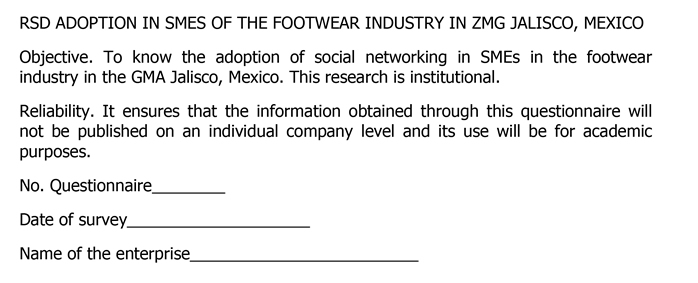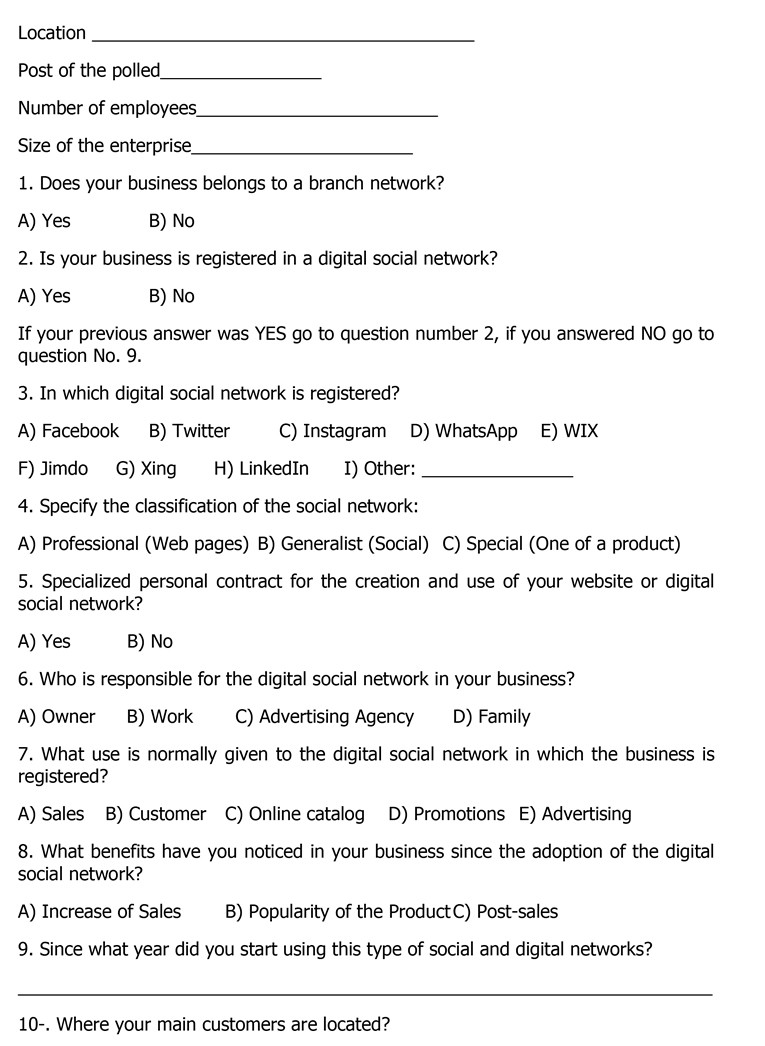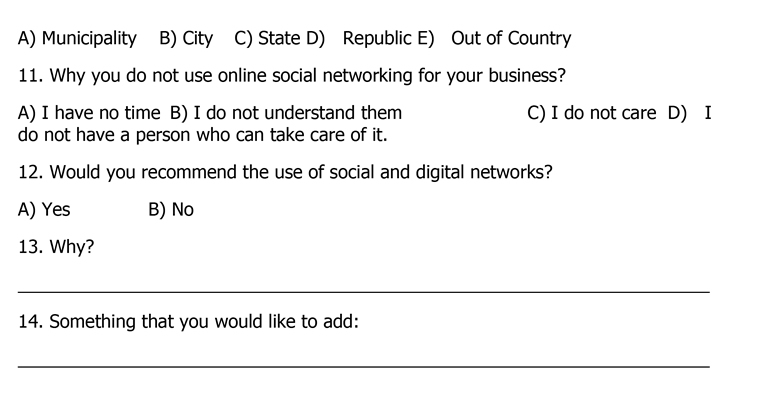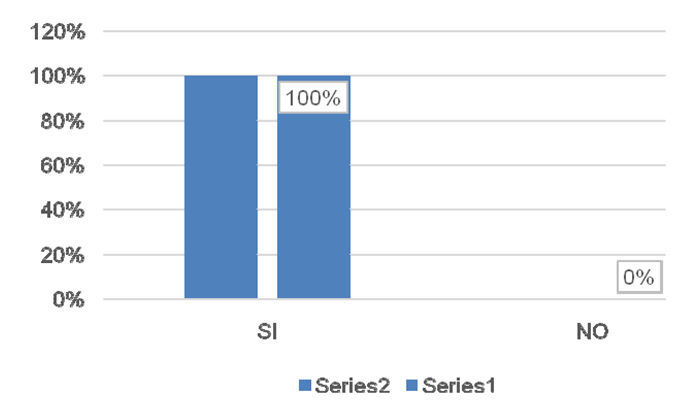
doi.org/10.15198/seeci.2016.40.48-68
RESEARCH
ADOPTION OF DIGITAL NETWORKS IN SMES FOOTWEAR INDUSTRY IN THE METROPOLITAN AREA OF GUADALAJARA JALISCO, MEXICO
ADOPCIÓN DE REDES SOCIALES DIGITALES EN LAS PYMES DE LA INDUSTRIA DEL CALZADO DE LA ZONA METROPOLITANA DE GUADALAJARA JALISCO, MÉXICO
Rosario Cota Yáñez1
Jazmín Antonio Cosme2
1University of Guadalajara (UdeG)
2Autonomous University of Baja California Sur (UABCS)
ABSTRACT
Information and communications technology have made a change in the companies, according to INEGI figures of the 4 million 734 existing business units in Mexico 99.8% are micro, small and medium enterprises. All this businesses, almost 30 percent use some ICT, as PC and internet, according figures from the secretary of Economy. Among ICT we found digital social networks that are an alternative of help for SMEs, in which you can reach a big breakthrough in business, possibly an increase in sales, popularity of producer, closer ties with their customers, until, have a higher presence in the market. The following research was raised with the objective to know the percentage of companies in Guadalajara, Jalisco metropolitan area , that are using or have been using digital social networks and the benefits that this have been attributed and affirming the hypothesis that these new technologies have become a good strategy for the growth of SMEs.
KEY WORDS: cybermarketing, digital social networks, Guadalajara, Footwear, adoption, digital technologies-social networks
RESUMEN
Las tecnologías de información y comunicación han logrado un cambio en las empresas, de acuerdo con cifras del Instituto Nacional de Estadística Geografía e Informática (INEGI) de las 4 millones 734 unidades empresariales existentes en México 99.8% son micro, pequeñas y medianas empresas. Del total de estos negocios, casi 30 por ciento utiliza alguna tecnología de la información y comunicación, como PC e internet, según cifras de la Secretaría de Economía. Entre las tecnologías de información y comunicación figuran las redes sociales digitales que son una alternativa de ayuda para las pequeñas y medianas empresas (Pymes), con las cuales se puede lograr un gran avance de sus negocios, posiblemente un incremento de ventas, popularidad del productor, lazos entre sus clientes, hasta llegar a tener una mayor presencia en el mercado. El objetivo de esta investigación es conocer el porcentaje de empresas en la Zona metropolitana de Guadalajara, Jalisco que han o están utilizando las redes sociales digitales y los beneficios que esto les ha atribuido, así como afirmar la hipótesis que estas nuevas tecnologías han logrado convertirse en una buena estrategia para el crecimiento de las pymes.
PALABRAS CLAVE: cibermarketing, Guadalajara, calzado, adopción, tecnologías, redes sociales digitales
Recibido: 23/01/2016
Aceptado: 17/04/2016
Publicado: 15/07/2016
Correspondence: Rosario Cota Yáñez
macotaya@gmail.com
Jazmín Antonio Cosme
jazz_ant@hotmail.com
1. INTRODUCTION
Shoe-making in Mexico and particularly in the state of Jalisco, is critical for the generation of wealth and employment that maintains the chain of footwear leather. By 1993 there were 1,386 footwear companies in the state of Jalisco half of which were characterized as micro enterprises and a large share of small businesses as well. In 1997 there were produced 180 million pairs, while in 1998 the figure increased to 200 million. The footwear industry has always maintained a moderate growth during 1998 due to the increase of domestic consumption and export growth relative to 1997. In 2004, the exports of footwear Jalisco companies were extended to Central and South America as a natural market that has improved the image of Jalisco and shoemakers companies (Perez Morales, & Hernandez, 2013).
Calzado Canada, created in 1940 with a dozen employees succeeded because Lopez Chavez knew properly analyze the social changes of the time and take advantage of the resources he had. Another element that contributed to the formation of the shoe empire was the marketing strategy implemented by Lopez Chavez, very innovative for that time in the footwear industry: the creation of a brand and product labeling. In the case of product name, Canada, was chosen because it was a foreign word and thus more appealing to consumers. “Lopez Chavez named it so because he believed that people preferred foreign products,” (Arias, 2014).
The affixing of the brand achieved that the consumers easily identified the Canada shoes, besides to allow its owner to use the publicity. Footwear promotion was through financing of radio programs; the distribution of promotional items like matchbooks and key rings at football matches, in the bullring and in dance competitions in the Agua Azul Park, where also pairs of shoes were given away to the winners (Arias, 2014).
1.1 Theoretical Framework, Information and Communication Technologies ICT
Information and communication technologies are a new information society, a specific form of social organization in which the generation, processing and transmission of data become the fundamental sources of productivity and power, due to the new technological conditions emerging in this historical period (Pinto, 2013) we live in a networked world where each one of us are nodes connected in common, information and communication technologies have managed to shorten space and time to do business, the electronic commerce has become more popular within companies to reduce costs and increase profits (Aguirre, Vega, & Cisneros, 2013) but at the same time to increase sales, build links and positioning themselves in high levels of competition.
1.2 SMEs
At present, SMEs abound, but as a start there are others that close by different problems. In Mexico a small business is one that is dedicated to the commercial sector with a range of 11 to 30 workers or the industry and service sector with a range of 11 to 50 employees and medium enterprises is the one with a range of 31 to 100 workers in commerce and a range of 51 to 100 or 250 in the services and industry, according to information from the Ministry of Finance and Public Credit (SHCP).
However, when making comparisons on a global scale, we face the problem that there is no unique classification to designate the small and medium enterprises, since each country makes its own and, therefore, do not assume the same criteria. For example, in the United States those that have up to 500 employees are regarded as small and medium enterprises, in Japan less than 300 and less than 250 in Mexico (Cota, 1998).
1.3 Social and Digital networks
Social and digital networks have become an excellent tool for the enterprises, because they allow them to interact directly on their customers, improve their relationship with them, to carry out after-sales services, to be thus in touch and communication with them and continue meeting the needs (Juárez, Jesus Antonio Rascon Ruiz, & Gaxiola, 2012). They have become the most influential phenomenon in the last decade, but only some platforms are dominating, such as Facebook, YouTube, Twitter, and more recently sites like LinkedIn and Pinterest (Saavedra, Criado, & Andreu, 2013).
This is an exciting new channel for any organization to massively show their ideas, and lnow its public in a less formal way and without problems of organizational structures (Amezcua, 2012) the digital social networks are a strategic resource and a new corporate dimension, so companies must be clear about all the benefits that these can bring in to business, keep in mind that they can play an outstanding job externally to customers and internally within the company to increase productivity and efficiency if well used.
1.4 Cybermarketing
The Cybermarketing is the online marketing wielding the Internet and all the advantages that this electronic means interrelates to develop new business strategies (Herrera, 2004), it is the tool that provides businesses, inter alia, the possibility of expanding its business base, to the extent that the sale via the Internet may facilitate the entry into new geographic markets or new customer groups, reduce costs and time, taking advantage of the ability of new technologies to automate internal processes (purchases, storage, management, business, etc.) (Prada, 2013).
A new unconventional marketing that has been introduced in our society, and is being used by large franchises and some SMEs that have adopted it.
2. OBJECTIVES
To identify how small traders of footwear use the social networks
3. METHODOLOGY
3.1 Participants
The study is aimed at small and medium enterprises in retail commerce shoe industry in the metropolitan area of Guadalajara Jalisco, Mexico. Specifically in companies established in Avenida Juarez and Galería del Calzado of Avenida Mexico (Annex. 1 and 2).
Guadalajara metropolitan area has a total of 79 companies of the selected sector according to the DENUE database (Annex. 3). The study instrument was applied to a total of 13 established companies.
3.2 Instrument
A structured questionnaire composed of 14 items (Appendix 4. Survey instrument) was used. This instrument was especially developed for this study and is divided into three main dimensions:
General data: the main dimension is to gather information about the company name, location, company size and position of the respondent.
The second part relates to the adoption and use of digital social networks: Types of networks, Use, Knowledge, Time of acquisition, Strategies.
Finally, the information on the benefits of using online social networks in the enterprise is detected, such as the increase in sales, the popularity of the product or the opportunity to post-sale customer.
3.3 Procedure
For this research the snowball data sampling was used, a non-probabilistic sampling technique. The total number of subjects selected for the study are 13 companies in two different areas located in Avenida Juarez and Avenida Mexico, because at first a sample of about 70 companies, of which 60 are establishments in Galería del Calzado and because the administration does not allow to elaborate surveys in this place not more than a minority of data could be obtained.
The implementation of the survey instrument was conducted in a span of four days, of the surveys conducted only 3 were answered by the owners of the companies and the remaining by those responsible for the counter. With the information obtained a database was developed and the corresponding graphs were made for analysis.
4. RESULTS
Here are the most significant results are shown to comply with the target of the investigation.
In the following graphs we can see that 100% of the surveyed companies belong to a network of branches (Figure 1), however only 77% of these companies belong to a digital social network or have created an account for managing their business (Chart 2)
Figure 1: Companies belonging to a network of branches.

Source: Prepared from survey of SMEs in the footwear industry of the GMA, 2015.
Figure 2: Companies belonging to a digital network.
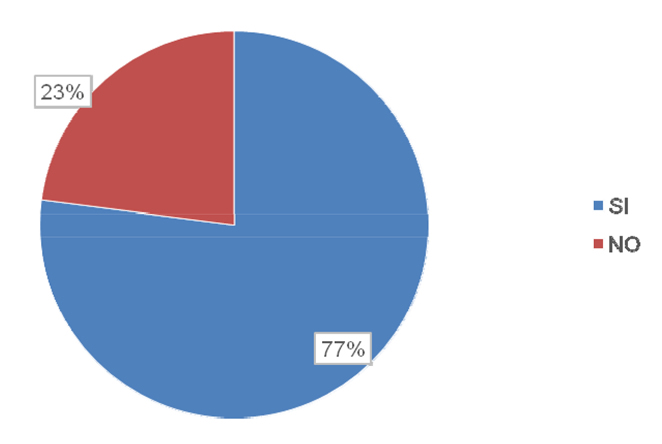
Source: Prepared from survey of SMEs in the footwear industry of the GMA, 2015.
The remaining 23% who do not have a digital social network or have not created an account to manage their business, 67% say their main reason is that they do not have a staff that can address this technology and 33% that they do not understand these pages (Figure 3). However within this percentage of people who do not use online social networks in their company, there is a low percentage that does not recommend its use (Figure 4). Of 100% of the companies surveyed only 8% does not recommend its use by different variables such as that the communication with the customer can be time-consuming or it is possible to exist a kind of cheating to the company with purchases that do not end up being materialized.
Figure 3: Reasons why they do not use online social networks.
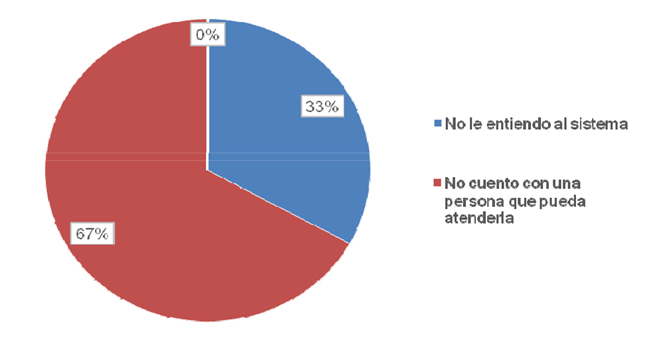
Source: Prepared from survey of SMEs in the footwear industry of the GMA, 2015.
Figure 4: Recommendations on the use of online social networks.
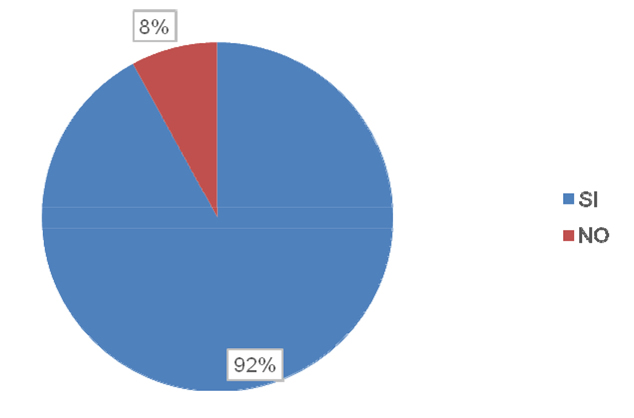
Source: Prepared from survey of SMEs in the footwear industry of the GMA, 2015.
However, information and communication technologies have become a widely used tool by businesses today and social networks are those that have had the biggest boom in recent years, as is the case of Facebook. In 2004, year of its foundation on the web, this digital social network was not as successful as in 2012, when its popularity grew not only in everyday life of society, but also in the workplace. And it was in this year that 40% of surveyed companies made greater use of social networks (Figure 5).
Figure 5: Years with increased use of social networks.
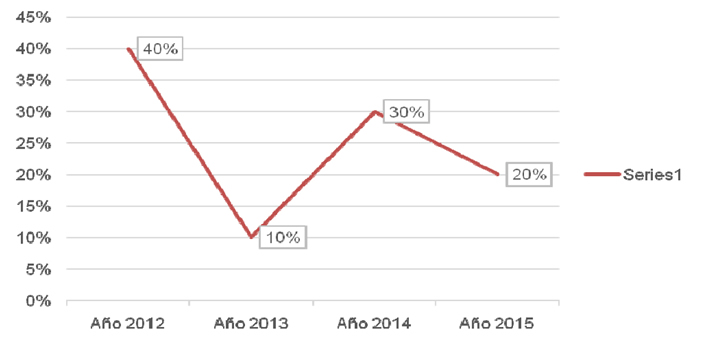
Source: Prepared from survey of SMEs in the footwear industry of the GMA, 2015.
The use of the various networks has given a wide range of options for businesses, from professional networks such as LinkedIn or Xing, who have contributed to promote the concept of “networking” between SMEs and middle management in the case of larger companies, to specialized networks such as eBuga or Ediciona. But the most successful have had today are generalist networks, of 100% of the companies surveyed in this research 40% use such networks (Figure 6) such as Facebook that has remained popular through the years, 44% of 100% of these companies use this social network to advertise their company (Figure 7), although there is the case of other options such as Stiletto shoes, which has its own radio station for the transmission of promotions or advertising about their products, which for them is a good tool to attract young people.
Figure 6: Rankings of enterprise networks.
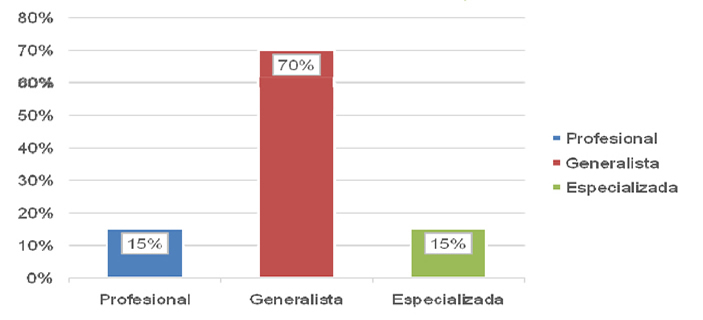
Source: Prepared from survey of SMEs in the footwear industry of the GMA, 2015
Figure 7: Classifications of enterprise networks.
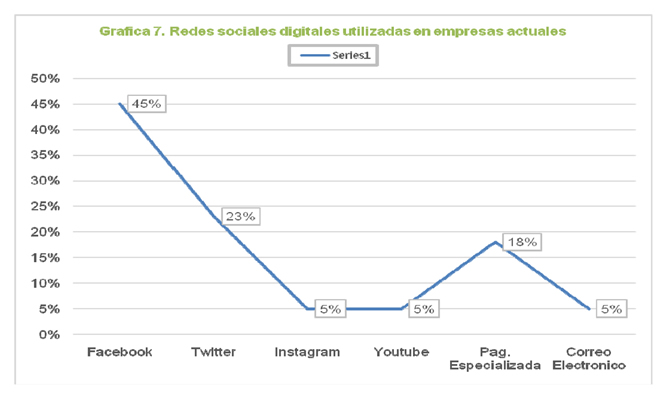
Source: Prepared from survey of SMEs in the footwear industry of the GMA, 2015.
According to data obtained from this research 60% of the companies surveyed have hired specialized personnel for creating their web pages and accounts in various social and digital networks (Figure 8) staff.
Figure 8: Hiring specialized account creation and web staff.
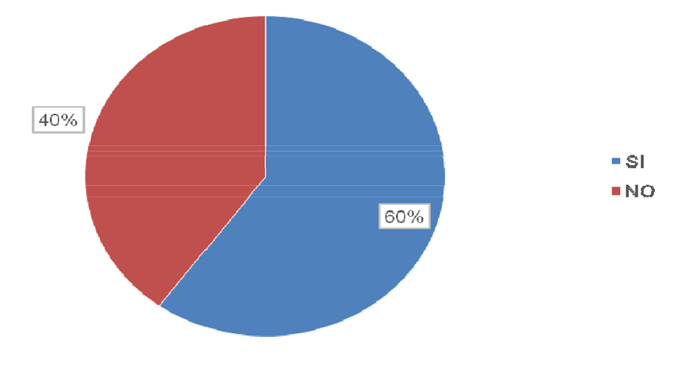
Source: Prepared from survey of SMEs in the footwear industry of the GMA, 2015.
But only 40% of these companies left these personnel in charge of the control of their websites and the accounts of online social networks (Figure 9), through which they carry out sales, give customer service, they have catalogs online, they offer promotions to their customers and give publicity to the company (Figure 10)
Figure 9: Responsible for the control of enterprise networks.
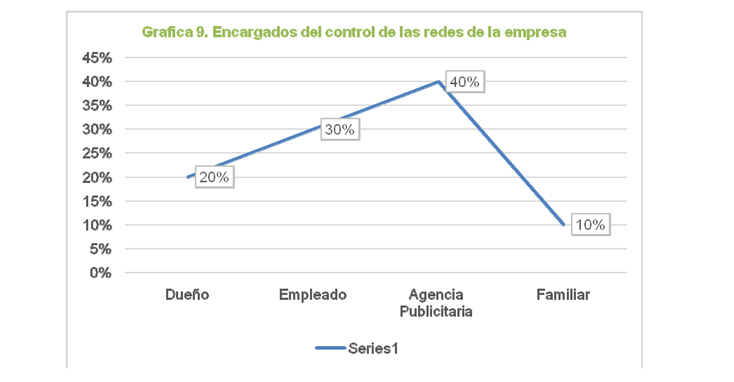
Source: Prepared from survey of SMEs in the footwear industry of the GMA, 2015.
Figure 10: Uses of social networks in business.
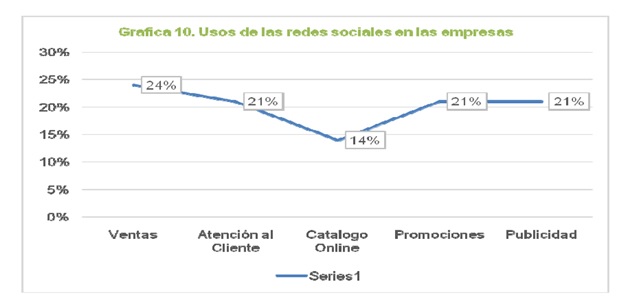
Source: Prepared from survey of SMEs in the footwear industry of the GMA, 2015.
Although most of the companies surveyed in the metropolitan area have their main customers in the city of Guadalajara, there is 30% of these companies that have customers outside the state (Figure 11) and supply to other parts of Mexico, for example the Perugia shoe store located in the Galería del Calzado that through their online social networks and web pages has been made known to other parts of the Mexican republic and supplies footwear to cities like Cancún, Veracruz, among others.
Thanks to the adoption of online social networks, sales of 54% of these companies have increased, as well as the popularity of the products of 30% of these companies (Graph 12).
Figure 11: Main customers of SMEs in the footwear industry ZMG Jalisco, Mexico.
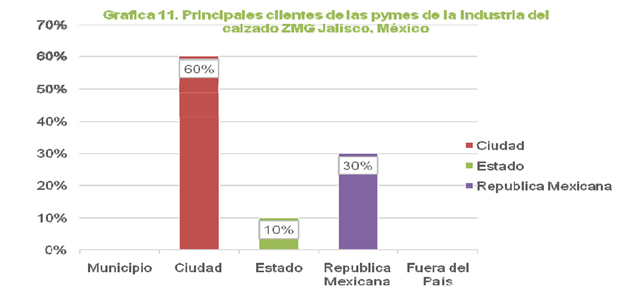
Source: Prepared from survey of SMEs in the footwear industry of the GMA, 2015.
Figure 12: Benefits of adopting online social networks.
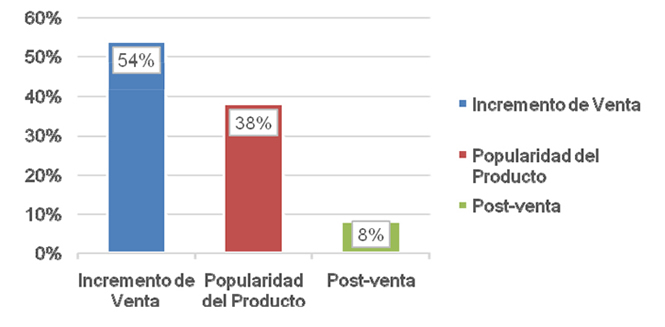
Source: Prepared from survey of SMEs in the footwear industry of the GMA, 2015.
5. CONCLUSIONS
According to what is shown in the course of the investigation it appears that the companies surveyed, find in the information technology and communication such as online social networks important opportunities, this reinforces the result of the use and benefits granted such as the increase of sales, the product popularity achieving a position of the company and the bonds created between client and company.
Although 100% of SMEs still do not catalog the use of online social networks as a necessary tool, the use of these new trends in information and communication technology, has granted some benefits to businesses and customers. The digital social network more used by both the social community and the business is Facebook, a social network considered to be easy to use, eye-catching and with different options to advertise products and / or services, however, companies are seeking alternatives for advertising of its products such as Stiletto Shoe, which has a radio transmission.
The channel used by most of these companies for sale to the public is through wholesale parcel services or branches in places of greater demand for their product. The line of business tends to focus on areas of greatest attendance, such as pedestrian streets and stops, for example Avenida Juarez and Avenida 16 de Septiembre, one of the main of the city, as well as, places created for them, such as Gallery Footwear.
One of the important observations on the methodology of this research was the fact of seeing the unwillingness and the little enthusiasm of owners or managers of companies or those in charge of areas to take part in investigations that could serve them in the future, which caused that this research changed to a non-probability sampling technique.
6. REFERENCES
1. Aguirre, A. B., Vega, C. V., & Cisneros, M. A. (2013). El uso de las redes sociales en las empresas manufactureras en la ciudad de Mexicali, Baja California. XVIII Congreso Internacional de Contaduría, Administracion e Informatica de la Universidad Autónoma de Baja California, México, 1-17.
2. Amezcua, M. P. (2012). Resdes sociales, mecanismos generadores de reputación organizacional para las PyMEs. Universidad & Empresa, 131-149.
3. Arias, P. (18 de Septiembre de 2014). El ejemplo perfecto: Calzado Canadá. (N. Ruiz, Entrevistador)
4. Bes, F. P. (2010). La publicidad en redes sociales. TELOS (Cuadernos de comunicación e Innovación), 1-12.
5. Casani, F., Rodríguez-Pomeda, J., & Sánchez, F. (2012). Los nuevos modelos de negocio en la economía creativa: Emociones y redes sociales. Universia Business Review, 48-69.
6. Castells, M. (2009). Comunicación y Poder. Madrid: Alianza Editorial, S.A.
7. Cortés, P. (24 de Junio de 2015). El mejor amigo de la moda: Las redes sociales. El Informador, 1-2.
8. Cota, M. d. (1998). La importancia de las pequeñas y medianas empresas. Gaceta Universitaria - CUCEA, 13.
9. Herrera, H. H. (2012). Las redes sociales: Una nueva herramienta de difusión social . Reflexiones , 121-128.
10. Juárez, L. E., Ruiz, J. A., Escobar, E. A., & Gaxiola, J. E. (2012). Redes Sociales: Una estrategia corporativa para las PyMEs de la región de Guaymas Sonora, México. FIR (FAEDPYME International Review).
11. Kromidha, J., Muca, B., & Sholla, A. (2011). Adoption of information and comunication technology in Albanian Tourism Industry in Global Setting: Challenges and Benefits. Journal of Information Technology and Enonomic Development , 64-73.
12. Manufactura.mx. (11 de Mayo de 2013). Industria de calzado impulsa la economia de Jalisco. Recuperado de http://www.prospecta.mx/pro/detail/3135#.VZwBd_l_Okp
13. Orta, R. (1999). Los detonadores de la competitividad. Una experiencia en la industria del calzado. Revista del ITESO, 23-28.
14Palazón, M., Sicilia, M., & Delgado., E. (2014). The role of social network sites in generating “brand love”. Universia Business Review, 18-39.
15. Pérez, J. A., Morales, E. E., & Hernandez, G. S. (2013). Propuesta de mejora del proceso de elaboracion de plantillas para zapato utilizando la metodologia lean manufacturing en la empresa Avios Guadalajara.
16. Pinto, D. E. (2013). Desarrollo e implementación de las TICS en las PyMEs de Boyacá - Colombia . Revista FIR, FAEDPYME International Review , 49-59.
17. Prada, M. C. (2013). El Cibermarketing en la MiPyME: Estrategia de Fortalecimiento y Posicionamiento. Revista de Investigaciones de la Escuela de Administración y Mercadotecnia del Quíndio, 28-41.
18. Saavedra, F. U., Criado, J. R., & Andreu., J. L. (2013). El uso de las redes sociales digitales como herramienta de marketing en el desempeño empresarial. Cuadernos de Administración, 205-231.
19. Sancho, J. L., & Miguel, P. d. (2011). Unirse a la conversación: Integrar las redes sociales en la estrategia y las operaciones. Harvard Deusto Business Review, 36-41.
7. ANNEXES
ANEXO 1. LOCALIZACIÓN AVENIDA JUÁREZ.
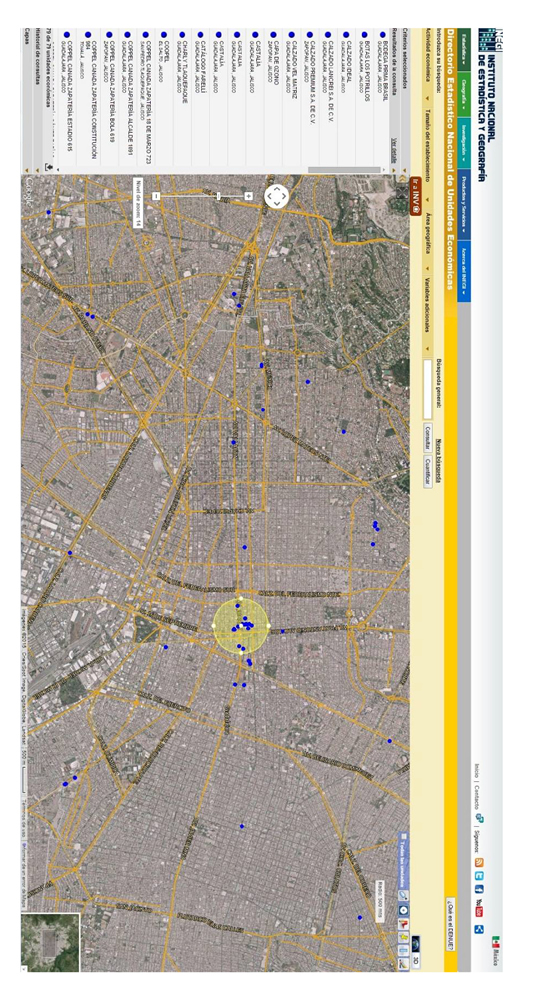
ANEXO 2. LOCALIZACIÓN AVENIDA MÉXICO (GALERÍA DEL CALZADO).
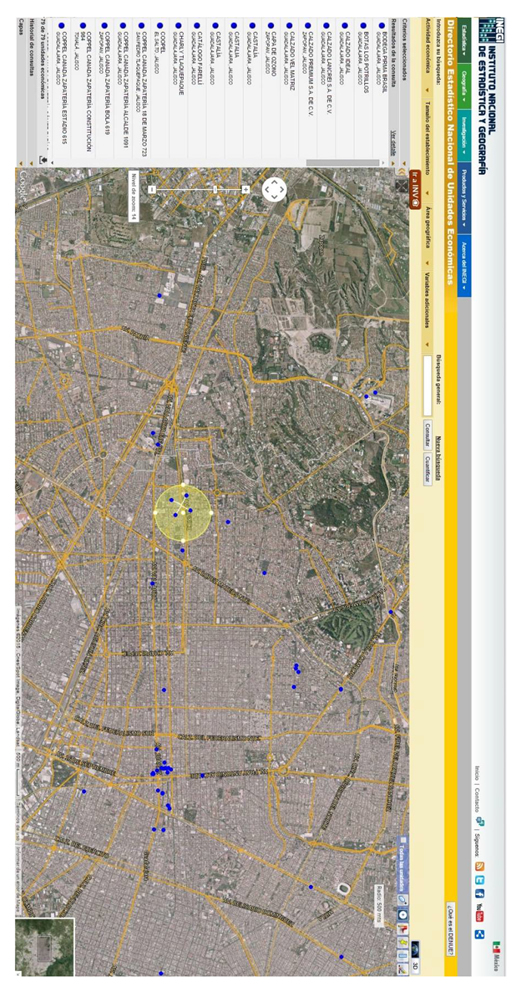
ANEXO 3. EMPRESAS DEL SECTOR COMERCIO AL POR MENOR DE LA INDUSTRIA DEL CALZADO DE LA ZONA METROPOLITANA DE GUADALAJARA JALISCO, MÉXICO (DENUE).
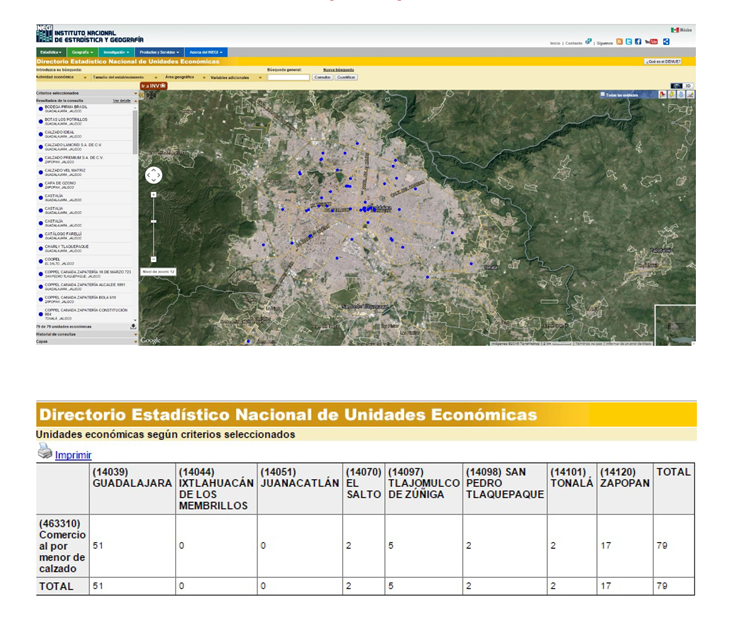
ANNEX 4. SURVEY INSTRUMENT
